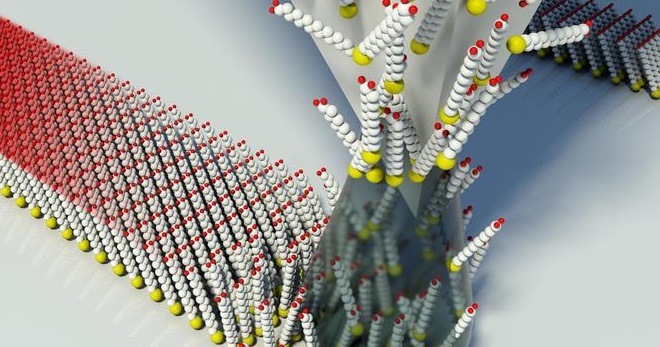Advances in the 3D printing of nanofibers – Advances 3D printing nanofibers - Arhive
Advances 3D printing nanofibers Advances 3D printing nanofibers Advances 3D printing nanofibers Advances 3D printing nanofibers Advances 3D printing nanofibers Advances 3D printing nanofibers Advances 3D printing nanofibers Advances 3D printing nanofibers Advances 3D printing nanofibers
Advances in the 3D printing of nanofibers

Nanofiber meshes can be used for many applications, including solar cells, body armor, and as part of systems for water filtration. While the potential is apparent in theory, in practice the use of nanofibers on a commercial scale has been hampered by generating sufficiently large volumes of the material of sufficient quality.
The interest in nanofibers arises due to some special properties. Such fibers have a high ratio of surface area to volume. This makes them particularly useful for solar cells, which try to maximize exposure to sunlight. In addition, nanofibers yield materials that are permeable at the small scale, which makes them suited for use as water filters. The fibers, when bound, are also relatively strong.
This is about to change following a breakthrough from materials scientists based at the Massachusetts Institute of Technology. This is based on 3D printing, with nanofibers being produced on a large scale and of good quality, with little variation with the diameters of the fibers produced. Diameter control is important since the performance of the fibers dependent upon their diameter.
The technology behind this has shifted from the manufacturing of fibers where silicon is etched to 3D printing. The process works by fashioning a printer made up of an array of small nozzles. Through the nozzles a special fluid, containing particles of a polymer, are pushed through. An electric field is sued to draw the fluid out into the form of the tiny fibers.
The nozzles of the 3D printer are arranged into two rows. These channels are marginally offset from each other. The offsetting is to produce fibers with a required alignment and so that the nanofibers maintain their relative position once they are collected by a rotating drum. To achieve the arrangement, the research group tested out 70 iterations of the alignment in order to optimize the production process.
This printer is a type of microfluidic device (the control and manipulation of fluids that are geometrically constrained to a small scale). Commenting on the device, expert reviewer Mark Allen, the Alfred Fitler Moore Professor at the University of Pennsylvania said: “I anticipate that somebody’s going to take this technology and use it in very creative ways. If you have the need for this type of deterministically engineered fiber network, I think it’s a very elegant way to achieve that goal.”
The research was led by Dr. Luis Fernando Velásquez-García and it has been published in the journal Nanotechnology. The research paper is headed “3D printed multiplexed electrospinning sources for large-scale production of aligned nanofiber mats with small diameter spread.”
Related Topics
-Asahi Kasei plant-derived nanofibers – Japan’s Asahi Kasei to trial-market plant-derived nanofibers
-Nano Dimension Uses Multilayer 3D Printing to Add Conductive Properties to Fabric
